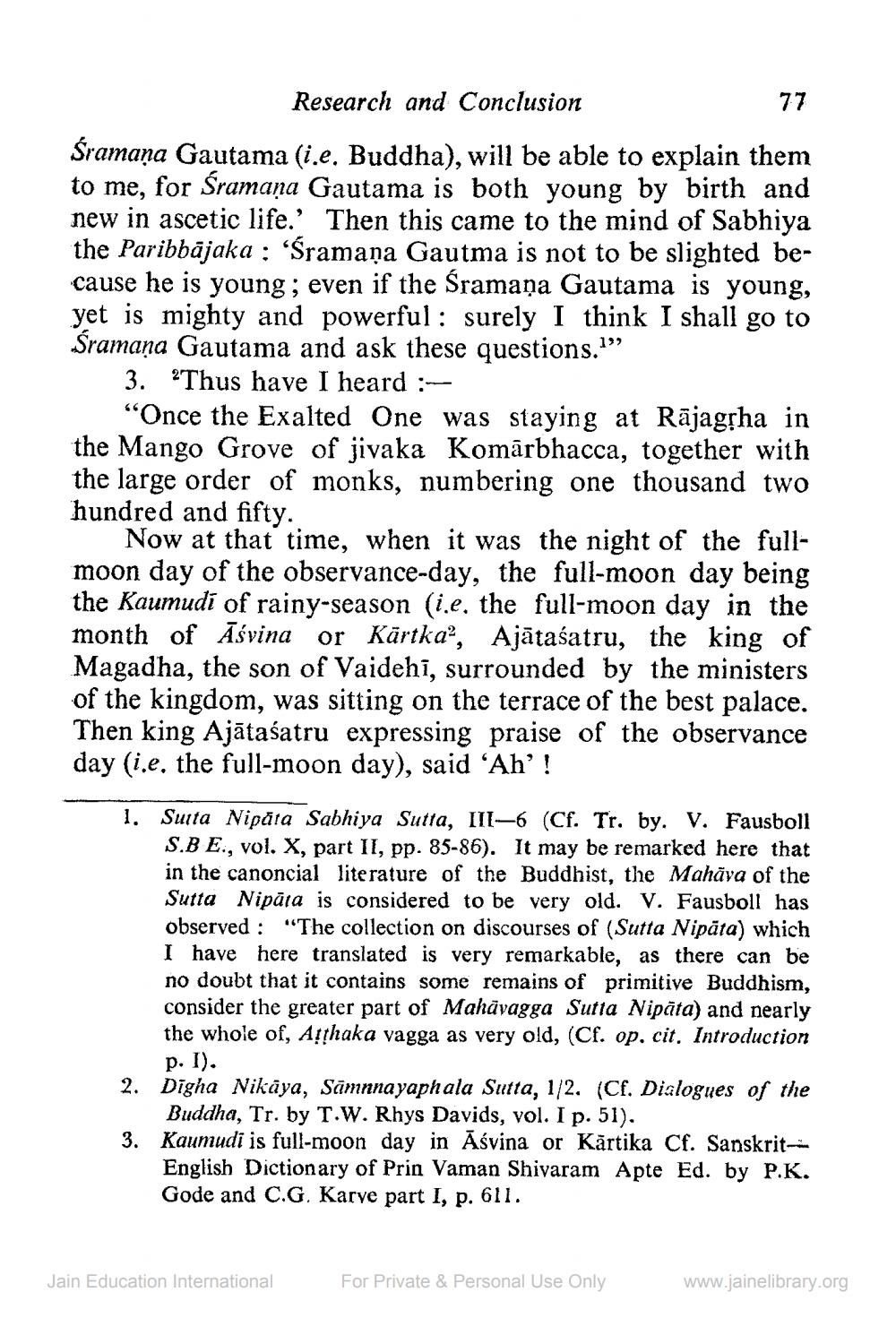________________
Research and Conclusion
77
Śramana Gautama (i.e. Buddha), will be able to explain them to me, for Śramaṇa Gautama is both young by birth and new in ascetic life.' Then this came to the mind of Sabhiya the Paribbājaka: 'Sramana Gautma is not to be slighted because he is young; even if the Śramaņa Gautama is young, yet is mighty and powerful: surely I think I shall go to Śramana Gautama and ask these questions.""
3. Thus have I heard :
"Once the Exalted One was staying at Rājagṛha in the Mango Grove of jivaka Komarbhacca, together with the large order of monks, numbering one thousand two hundred and fifty.
Now at that time, when it was the night of the fullmoon day of the observance-day, the full-moon day being the Kaumudi of rainy-season (i.e. the full-moon day in the month of Asvina or Kārtka2, Ajātaśatru, the king of Magadha, the son of Vaidehī, surrounded by the ministers of the kingdom, was sitting on the terrace of the best palace. Then king Ajātaśatru expressing praise of the observance day (i.e. the full-moon day), said 'Ah'!
1. Suita Nipata Sabhiya Sutta, III-6 (Cf. Tr. by. V. Fausboll S.B E., vol. X, part II, pp. 85-86). It may be remarked here that in the canoncial literature of the Buddhist, the Mahāva of the Sutta Nipata is considered to be very old. V. Fausboll has observed: "The collection on discourses of (Sutta Nipäta) which I have here translated is very remarkable, as there can be no doubt that it contains some remains of primitive Buddhism, consider the greater part of Mahāvagga Sutta Nipäta) and nearly the whole of, Atthaka vagga as very old, (Cf. op. cit. Introduction p. I).
2. Digha Nikaya, Sämnnayaphala Sutta, 1/2. (Cf. Dialogues of the Buddha, Tr. by T.W. Rhys Davids, vol. I p. 51).
3. Kaumudi is full-moon day in Aśvina or Kartika Cf. Sanskrit-English Dictionary of Prin Vaman Shivaram Apte Ed. by P.K. Gode and C.G. Karve part I, p. 611.
Jain Education International
For Private & Personal Use Only
www.jainelibrary.org




